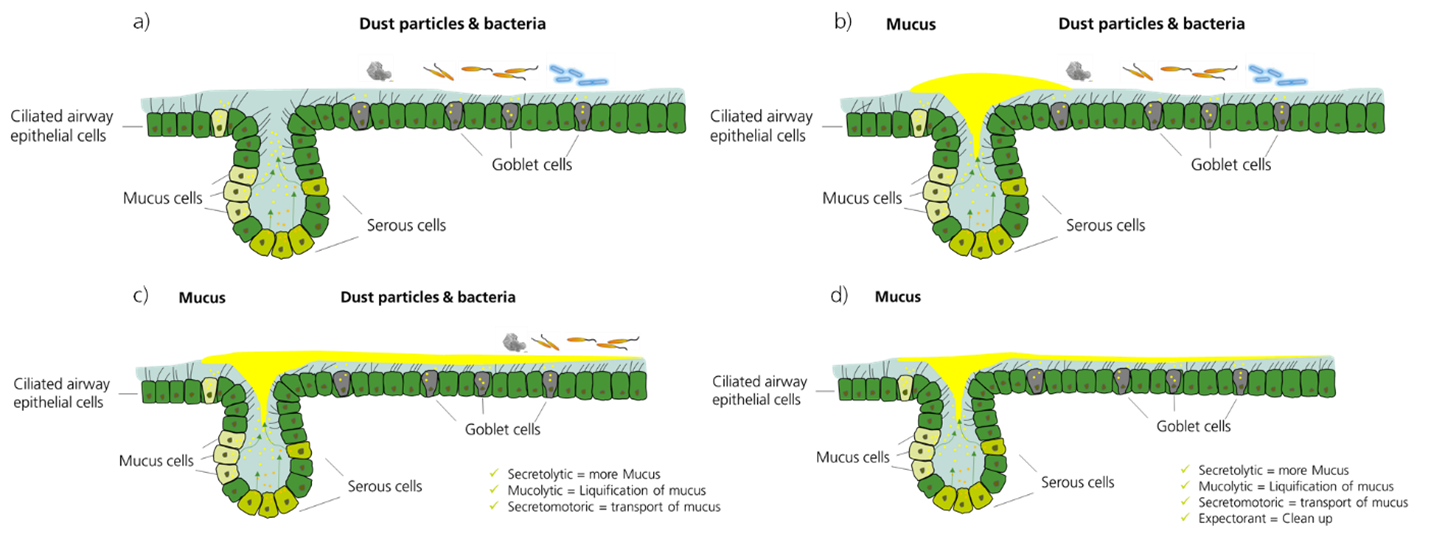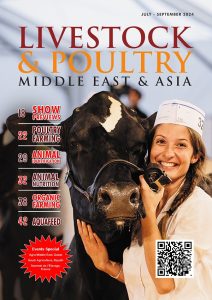Farming, especially livestock farming, is a stressful job. Caring for animals requires effort 24 hours a day, seven days a week, 365 days a year. Diseases in livestock place a heavy burden not only on animals, but also on workers. Sick animals require special attention, which increases time pressure and general work-related stress.In a climate of severe labour shortages, good practices and technologies that make life easier for staff can contribute significantly to the success of the farm. Investing in animal health is a prime example of such practices.
Respiratory diseases: a major challenge
Respiratory diseases, along with enteric infections and reproductive disorders, are among the biggest challenges in the livestock industry. They can compromise animal health and welfare and lead to significant economic losses and a higher workload at all stages of production. Respiratory diseases are prevalent in cattle, pigs, horses, sheep and goats, and symptoms like coughing are so common that animal keepers often do not notice them while working in the barn.
The lungs need support
Performance requires oxygen – if the animals cannot breathe, they cannot perform. Healthy lungs create an important barrier between the environment and the animal. The respiratory epithelium in the airways is covered by moving cilia that sweep foreign particles away, while mucus secreted by goblet cells keeps epithelial moisture and traps particles and pathogens (fig.1).

Fig. 1: Barrier function of the ciliated airways: Mucus production b), liquefication of the mucus c), and removal of dust and pathogens from the airways d)
Any outside influence that lowers the immune system’s activity or impairs the respiratory cilia’s function is a risk factor for respiratory disease. Depending on the production region, climate plays a key role in the occurrence of respiratory disease. Cold and wet weather, fog levels with little air exchange and low UV radiation favour the spread of infections. Strong temperature fluctuations between day and night also put a strain on the animals’ immune system. In hot climates, high temperatures and humidity make it easier for microorganisms, secondary particles, and toxic metabolites to attach to the particulate matter entering the respiratory system (Dai et al., 2020). Elevated levels of dust or fungal spores irritate the animals’ respiratory tract, causing localised inflammation and paving the way for other pathogens such as virus and bacteria. Bacterial infections often require antibiotics, driving the spread of antibiotic resistance.
Young animals are especially at risk. A still weak respiratory system, an underdeveloped immune system and weaning stress are often the causes of respiratory disease. Respiratory problems in young animals can lead to lung damage which can impair the animal’s performance and consequently reduce financial returns throughout the entire production process. Lung lesions are a common occurrence at slaughterhouses in cattle as well as pigs and research has shown a clear connection between damaged lungs and performance reduction and money loss. In swine production, productivity loss can reach up to 14 US-Dollar per pig, while bovine respiratory disease syndrome can lower the net revenue per animal by 35% or more in feedlot operations due to veterinary treatment costs and negative implications for health and performance.
Prevention is better than cure
Investing in animal health and reducing the working hours needed per animal can lower the overall demand for labour and improve workplace characteristics, positively influencing employee well-being, motivation and productivity.
What can be done to prevent the introduction and spread of respiratory disease on the farm and make life easier for the workforce? Well-maintained and reliable ventilation systems optimise environmental moisture, temperature and ammonia levels and reduce the threat of airborne bacteria and viruses. Avoiding stress and following biosecurity principles and appropriate vaccination protocols are an essential part of a comprehensive management program to prevent respiratory disease. On top of that, there is power in natural solutions as we have learned from the pharmaceutical industry. Essential oils are often the first choice to prevent, support or replace antibiotic therapy in respiratory infections. While antibiotic therapy aims to reduce and control pathogen bacteria, essential oils target control of local and systemic inflammatory processes.
The essential oil-based product Anta®Fresh contains valuable ingredients like thymol and carvacrol, which are known for their antimicrobial, antioxidant and anti-inflammatory properties. Mucolytic and expectorant activity helps with muco-ciliary clearance, transporting foreign particles and infectious agents out of the lungs, preventing their build-up and supporting the natural cleaning functions of the respiratory system. This reduces the risk of recurrent respiratory infections, relieving the animal’s organism. In this way Anta®Fresh can work synergistically in the treatment and management of symptoms that are associated with the respiratory tract and reduce the workload associated with respiratory disease in the barn.
Practical experience has demonstrated that timely use of Anta®Fresh, such as at the change of season, with the first coughing symptoms, in poor conditions or in combination with conventional treatment, can reduce medication consumption, including antibiotics, by up to 50%. This not only reduces costs for farmers but also lessens the strain on animals and the environment, promoting animal welfare and sustainability in animal production.By integrating Anta®Fresh into your animal production practices, you are investing in the well-being of your animals and securing a brighter future for your business and the environment. It’s a win-win solution that bridges the gap between thriving livestock and thriving economics.
Happy animals, happy workers
Listen carefully to your animals, know the risk periods, and take preventive measures before it is too late. This will keep the animals healthy and your workforce happy. Preventing respiratory diseases can reduce overall labour demand, making the workplace more attractive and helping to attract and retain staff.Invest in healthy animals, save on labour costs, find staff more easily and have a more satisfied workforce. This strategy pays off in many ways.
About the authors

Elisabeth Holl, an agronomist holding a doctorate in agricultural engineering, has been at Dr. Eckel for more than 25 years and knows the industry as well as the company inside out. The Senior Technical Manager is the point of contact for a large number of products and can provide help in a variety of matters due to her broad expert knowledge.

Bernhard Eckel, an agronomist holding a doctorate in animal nutrition, knows the industry from scratch. He established Dr. Eckel with Antje Eckel and was the first employee. As Vice President and Chief Technical Officer, he is responsible for technical sales, product development and animal welfare, and thus plays a major role in the success of the company.
























